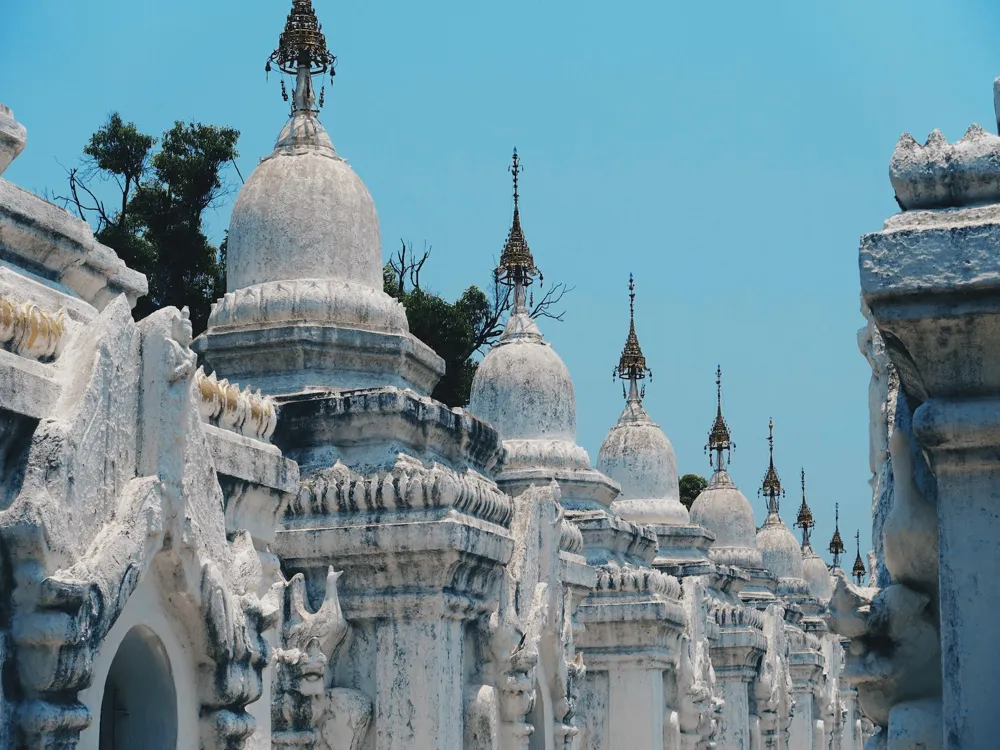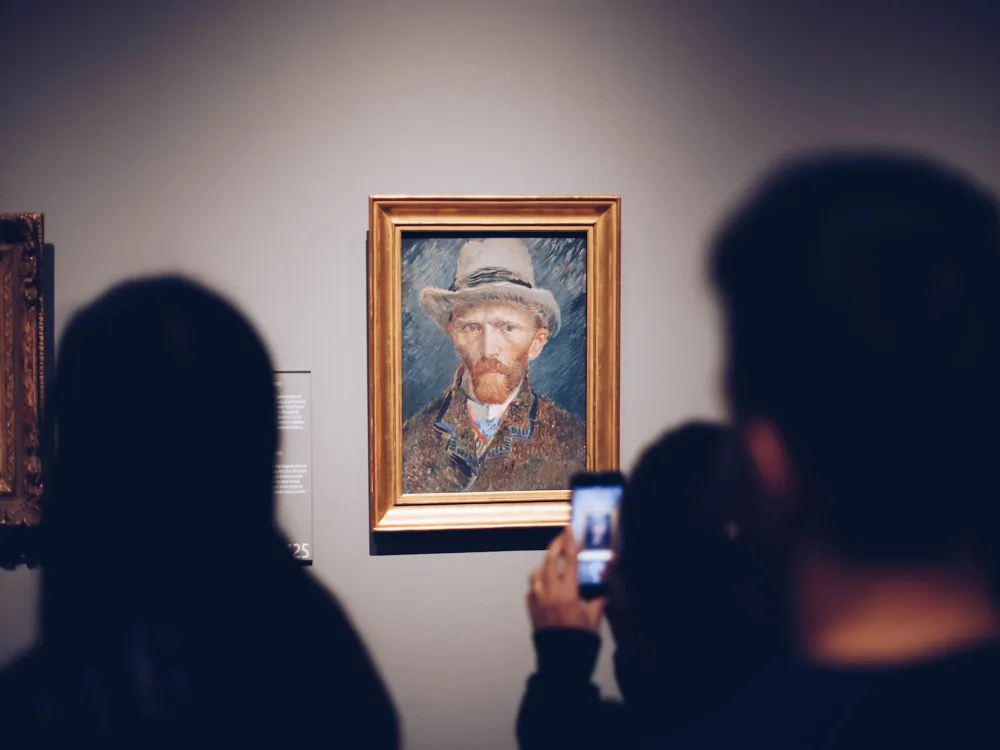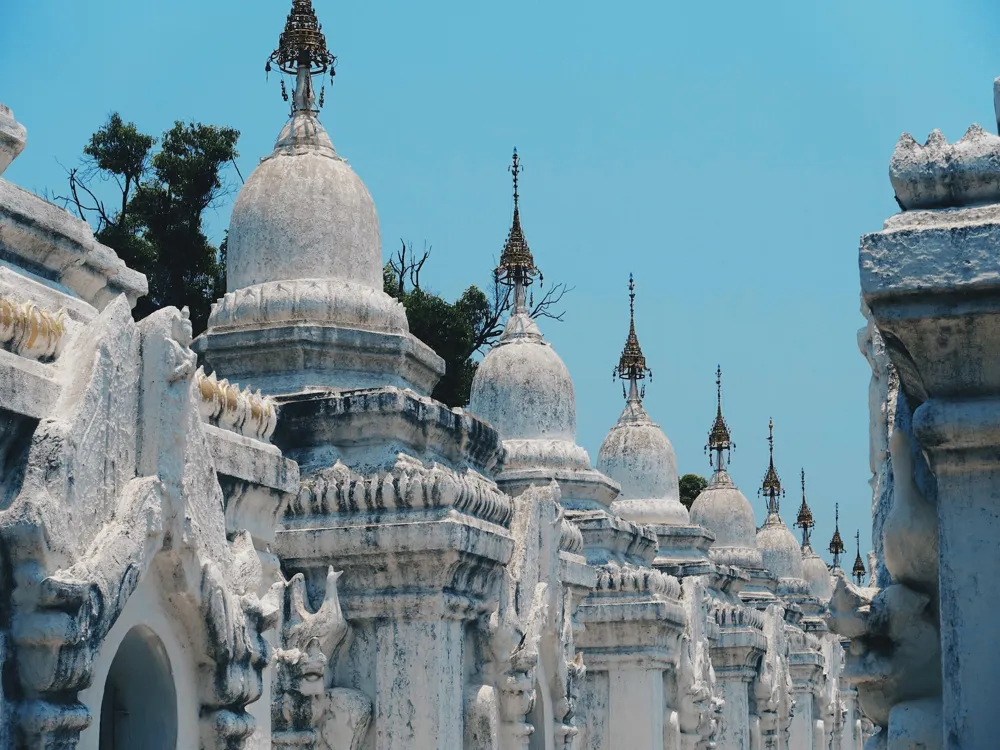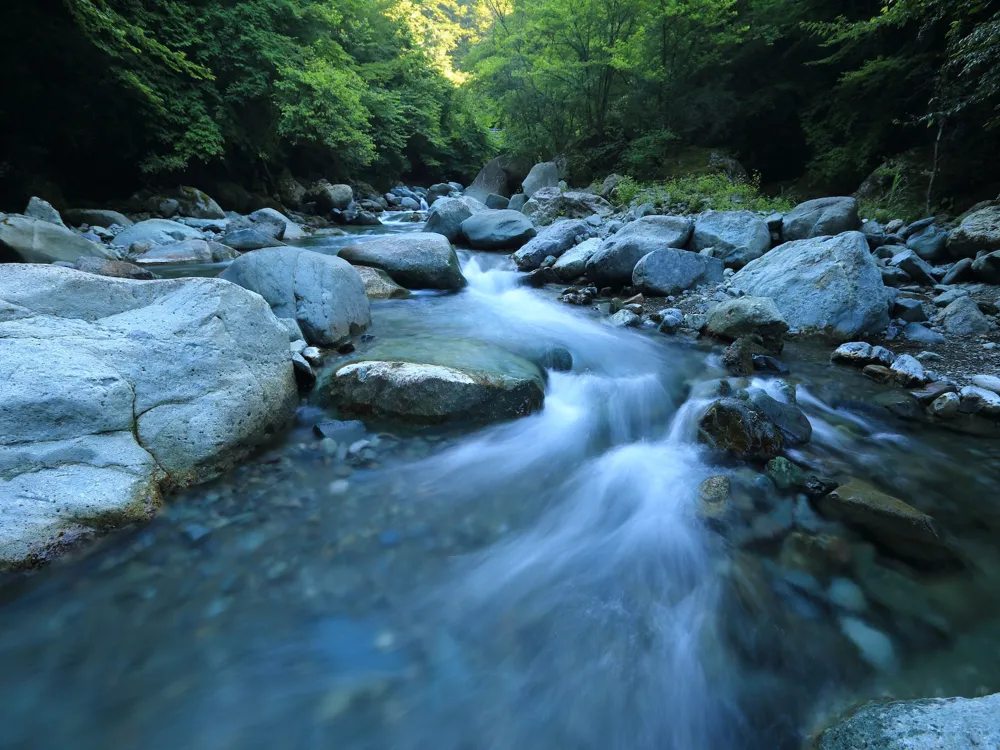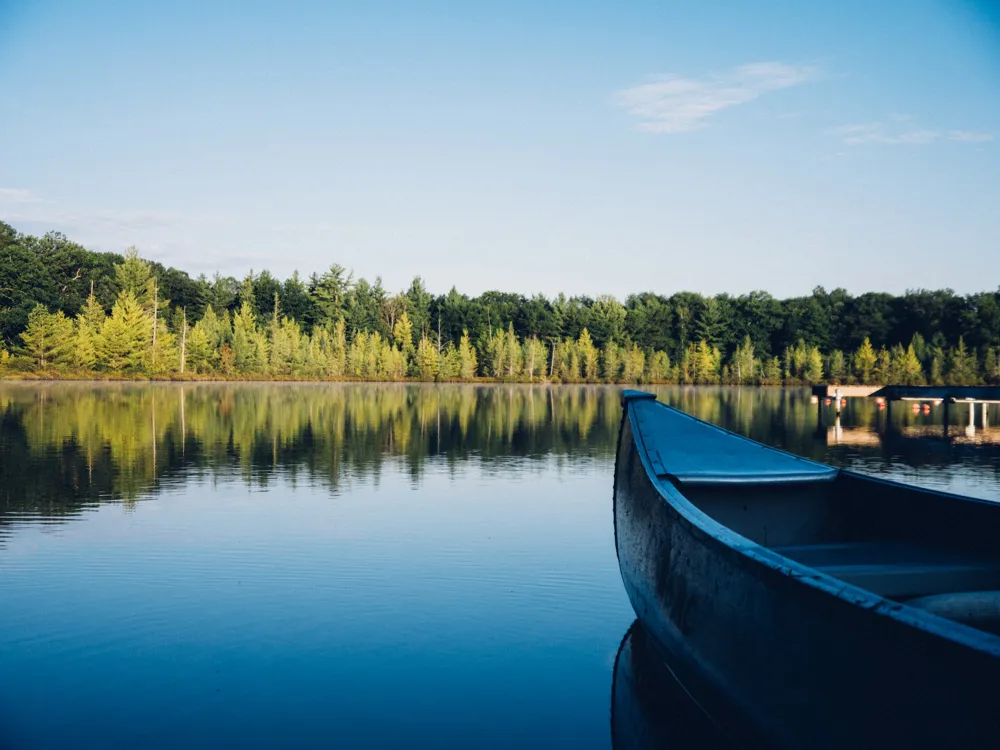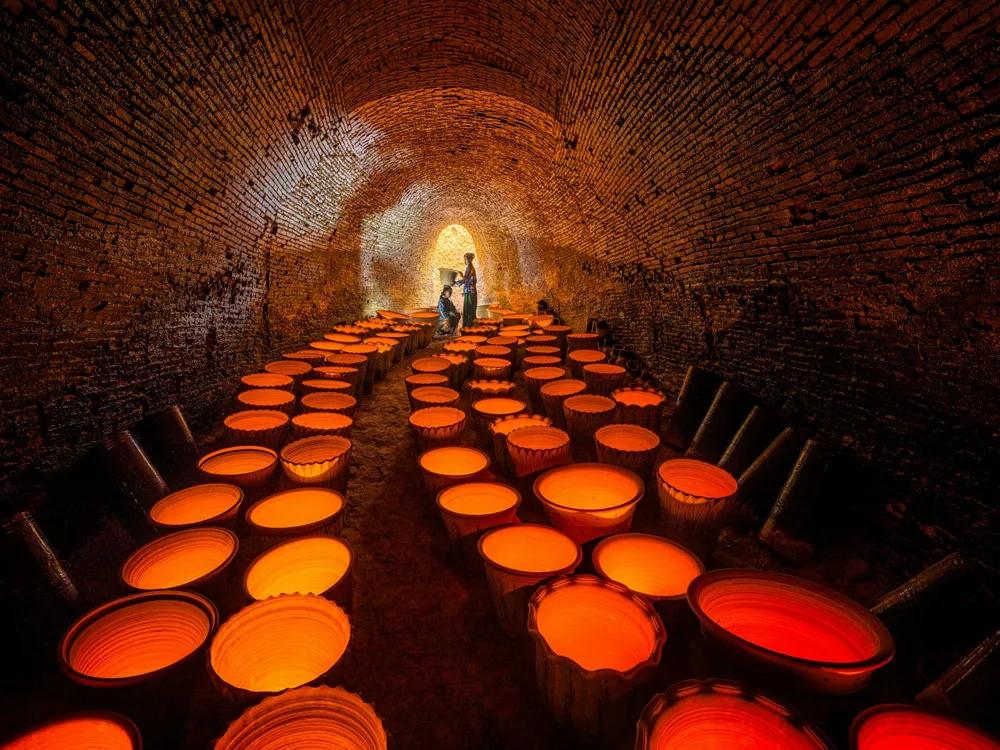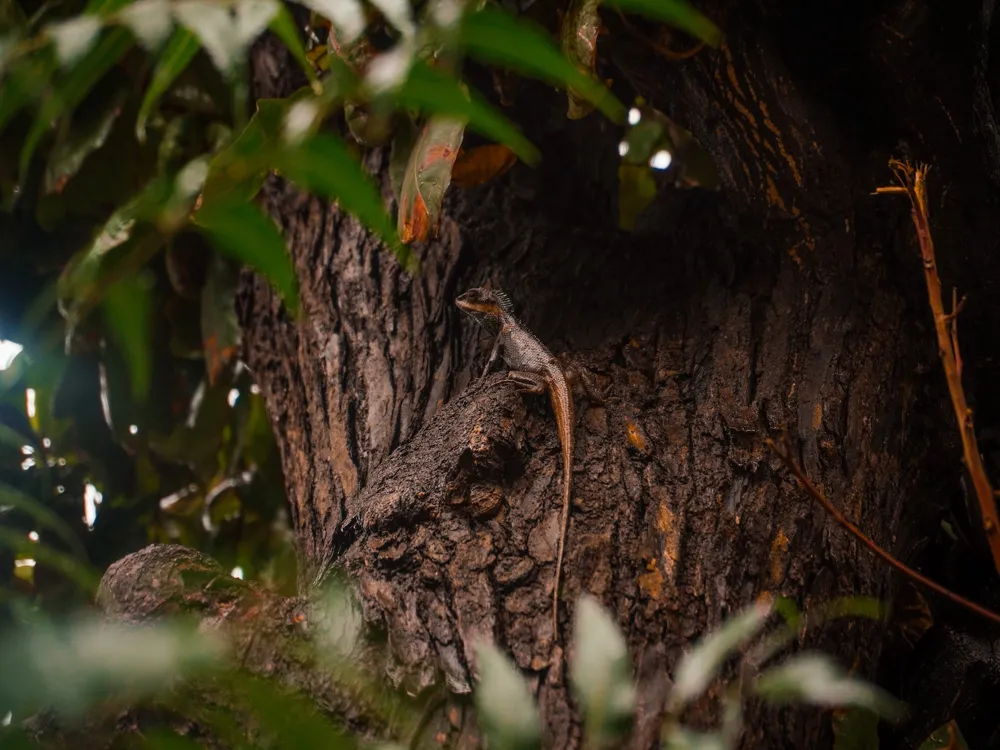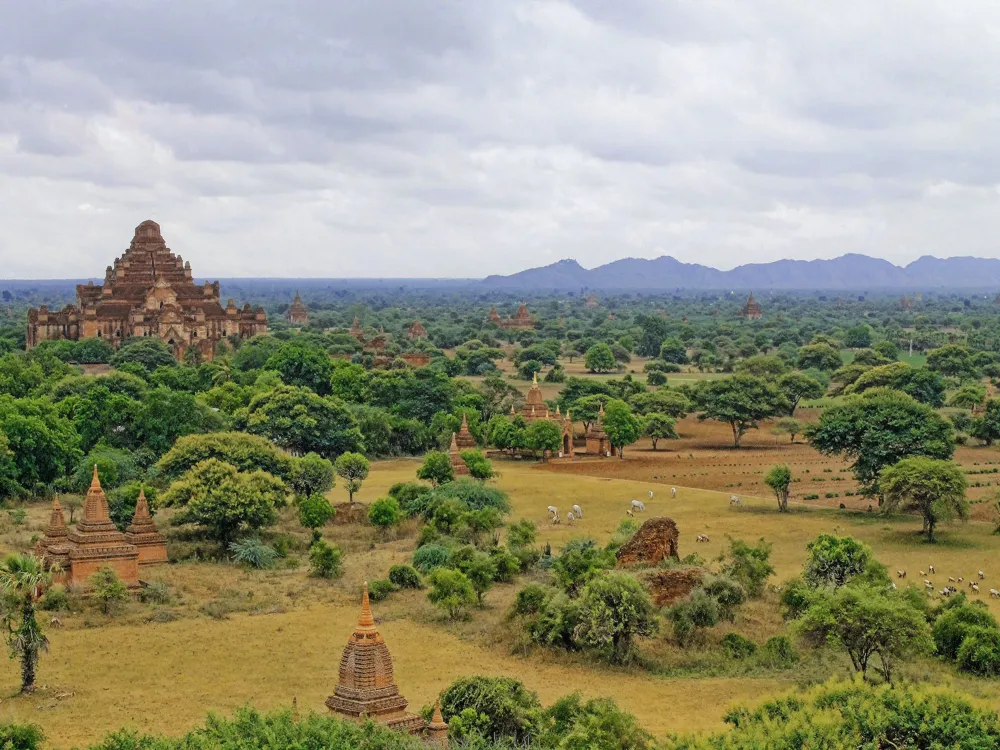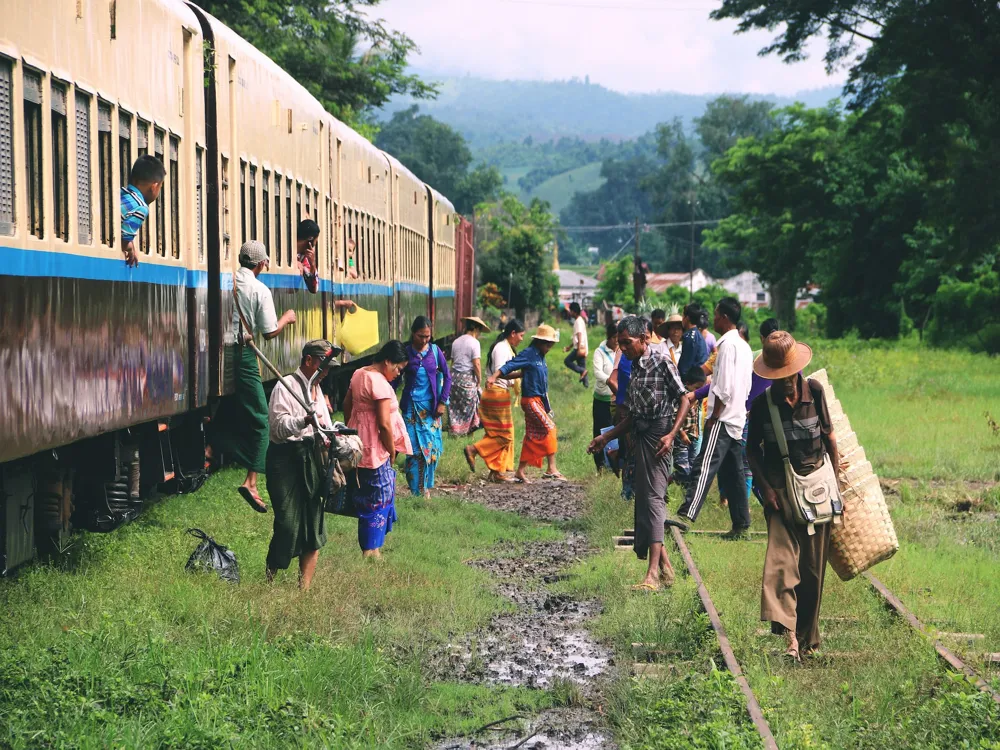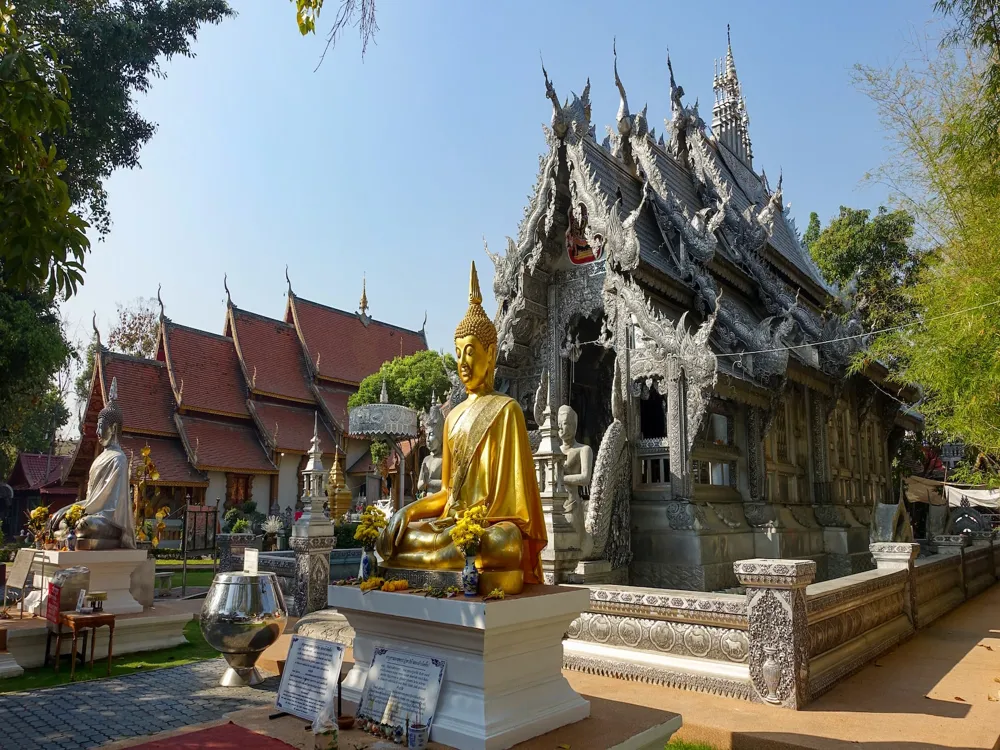The U Bein Bridge, a picturesque teakwood bridge located in Mandalay, Myanmar, stands as a monumental testament to ancient engineering and cultural heritage. Stretching 1.2 kilometers across the shallow Taungthaman Lake, this bridge is not only a functional passageway but also a symbol of Myanmar's rich history. The bridge was constructed in the mid-19th century, using reclaimed wood from a royal palace during the shift of the capital from Amarapura to Mandalay. This architectural marvel has withstood the test of time and continues to be a vital part of the local community's daily life, as well as a major attraction for visitors from around the world. Visitors to U Bein Bridge are treated to a breathtaking display of craftsmanship and natural beauty. The bridge's structure, primarily made of teak, a durable and water-resistant wood, has allowed it to survive through Myanmar's tropical climate. The bridge features over a thousand wooden pillars that are planted into the lake bed, providing a sturdy yet elegant framework. The charm of U Bein Bridge is not just in its structure but also in its role as a place of social gathering. It serves as a pedestrian passageway for the local people and a serene spot for tourists seeking to witness stunning sunsets and peaceful landscapes. The architecture of U Bein Bridge is a remarkable example of traditional Myanmar construction techniques. The bridge is entirely made of teakwood, a material known for its strength and resistance to decay. The use of teak is particularly significant as it reflects the resourcefulness of the builders who repurposed materials from an abandoned palace. The design of the bridge is simplistic yet functional, featuring a curved shape to withstand the varying water levels of the lake. The bridge's construction is a testament to the ingenuity of its builders. It is supported by over a thousand pillars that are firmly entrenched into the lakebed. These pillars are irregularly spaced, indicating a resourceful use of available materials. The handrails and the flooring, also made of teak, have been replaced and maintained over the years, ensuring the safety and preservation of this historic structure. The bridge's architectural design not only provides practical transportation across the lake but also offers panoramic views of the surrounding landscape, making it a favorite spot for photographers and nature enthusiasts. For the optimal experience, visit U Bein Bridge during sunrise or sunset. These times offer the most picturesque views and cooler temperatures. Also, consider visiting during the dry season from October to March for better walking conditions. As a visitor, it's important to respect local customs and traditions. Dress modestly, avoid loud noises, and be respectful of the people using the bridge for their daily commute. While walking on the bridge, be mindful of loose or uneven planks. It's advisable to wear comfortable footwear and be cautious, especially if you're visiting with children. For photographers, the bridge offers stunning opportunities, especially during golden hours. However, be respectful of people's privacy while taking photos. U Bein Bridge is accessible from Mandalay, which is well-connected by air, road, and rail. The most common way to reach the bridge is by taxi or tuk-tuk from Mandalay, which is a short and scenic drive. Alternatively, you can also rent a bicycle or a motorbike for a more adventurous journey. For a more immersive experience, consider taking a boat trip from Mandalay, which provides a unique perspective of the bridge from the water. Read moreOverview of U-Bein Bridge in Mandalay
Architecture of U-Bein Bridge
Tips When Visiting U Bein Bridge
Best Time to Visit
Cultural Etiquette
Safety Tips
Photography Tips
How To Reach U Bein Bridge
Mandalay Tourism
Best Time to Visit Mandalay
How to Reach Mandalay
Things To Do Mandalay
U Bein Bridge
Mandalay
NaN onwards
View mandalay Packages
Weather :
Tags : Bridge
Timings : 6:00 AM - 7:00 PM
Entry Fee : Free
Planning a Trip? Ask Your Question
Mandalay Travel Packages
View All Packages For Mandalay
Top Hotel Collections for Mandalay

Private Pool

Luxury Hotels

5-Star Hotels

Pet Friendly
Top Hotels Near Mandalay
Other Top Ranking Places In Mandalay
View All Places To Visit In mandalay
View mandalay Packages
Weather :
Tags : Bridge
Timings : 6:00 AM - 7:00 PM
Entry Fee : Free
Planning a Trip? Ask Your Question
Mandalay Travel Packages
View All Packages For Mandalay
Top Hotel Collections for Mandalay

Private Pool

Luxury Hotels

5-Star Hotels

Pet Friendly







